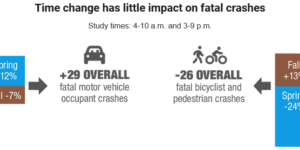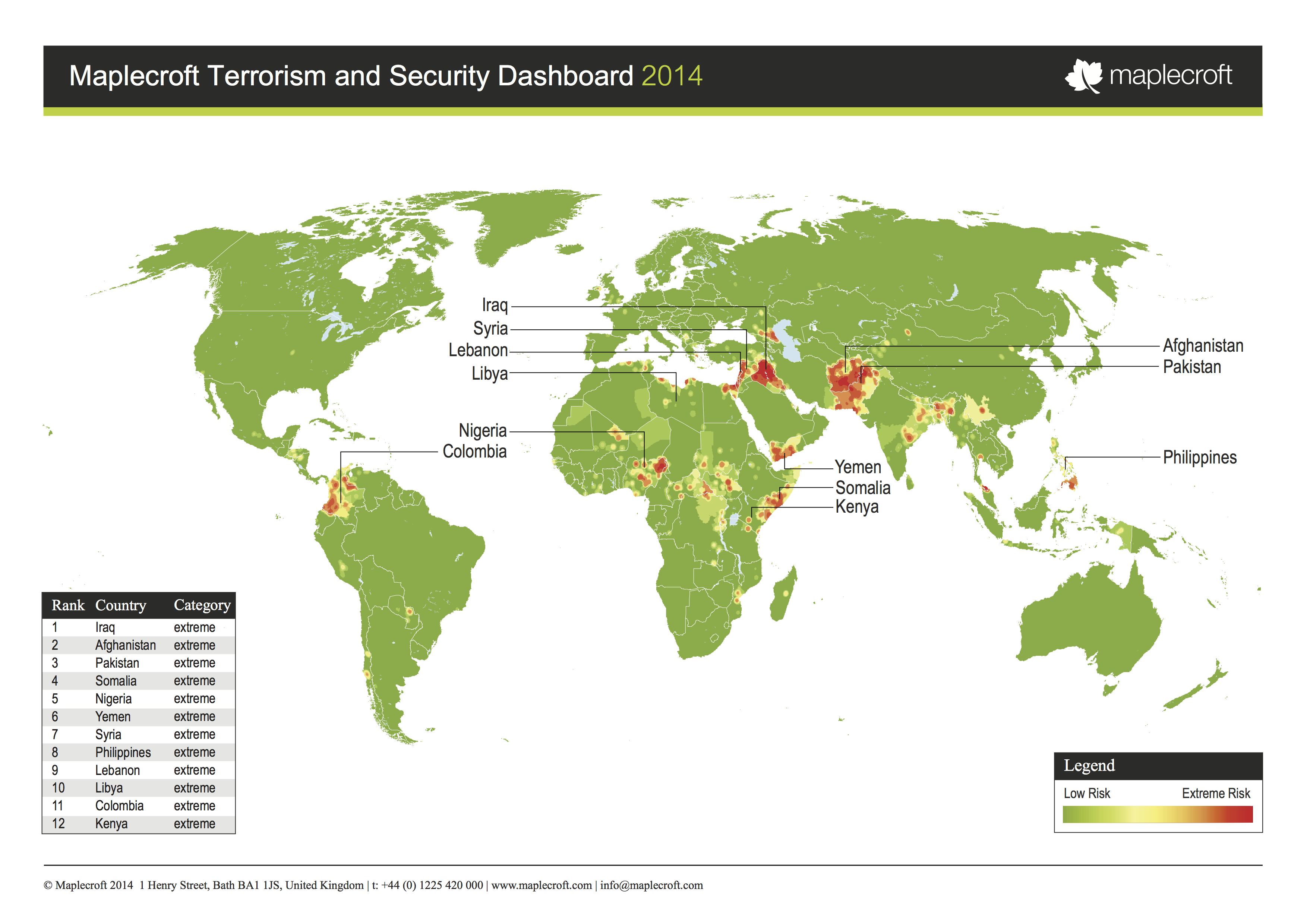Global fatalities from acts of terrorism have risen 30 percent over the last 12 months compared to the five-year average, according to a new security monitoring service from global risk analytics company Maplecroft.
The Maplecroft Terrorism and Security Dashboard (MTSD) logs, analyses and maps all reported incidents of terrorism, piracy, political violence and human rights abuses by security forces worldwide.
The MTSD recorded 18,668 fatalities globally in the 12 months prior to July 1, up 29.3 percent from an annual average of 14,433 for the previous five years. There were 9,471 attacks—an average of 26 a day—compared to the five-year average of 10,468.
The MTSD classified 12 countries as extreme risks:
- Iraq
- Afghanistan
- Pakistan
- Somalia
- Nigeria
- Yemen
- Syria
- the Philippines
- Lebanon
- Libya
- Colombia
- Kenya
Iraq recorded 3,158 acts of terrorism resulting in 5,929 fatalities—an increase of 2,188 deaths over the previous year. MTSD said the deteriorating security situation in Iraq underscores the government’s inability to combat the militant group Islamic State, which controls vital oil and gas infrastructure.
Nigeria recorded the highest number of fatalities per attack, with 146 reported attacks from July 2013 through June 2014 resulting in 3,477 people killed—an average of 24 fatalities per attack compared to two deaths per attack in Iraq.
“The dynamic nature of terrorism means individual events are impossible to predict,” said Maplecroft CEO Alyson Warhurst. “However, up-to-date global intelligence on the intensity, frequency, precise location and type of attacks can help organizations to make informed decisions relating to market entry, security measures for in-country operations, duty of care obligations, supply chain continuity and risk pricing.”
Rising Risks
Libya, Kenya, Egypt and China were identified as having the most significant increases in the risk of terrorist attacks.
Terrorism incidents in Libya have doubled over the last year, MTSD found, and blockades of the country’s main oil ports by rebel militias and divestment by multinational hydrocarbon companies have had a significant impact on the country’s oil sector.
Tourism in Kenya, which accounts for roughly 12.5 percent of GDP, has been hit hard due to the increasing frequency and intensity of terrorism attacks by Somali-based Islamic militant group al Shabaab, according to MTSD. Still, Maplecroft said that Kenya’s $2 billion debut eurobond in June 2014 highlights continued investor interest in the country.
In Egypt—labeled a “high risk” at number 17—attacks in the Sinai Peninsula and Cairo reduced tourism by 20 percent in May compared to the same month last year, while frequent bombings of the gas pipeline in North Sinai have impacted exports and government revenues.
Attacks are also on the rise in China—a “medium risk” at number 32—and many of those attacks have targeted transportation hubs. There have been 76 terrorism-related fatalities thus far in 2014 compared to 16 over the first six months of 2013.
Source: Maplecroft






















 Study: Average Cyber Breach Insurance Coverage Gap is 350%
Study: Average Cyber Breach Insurance Coverage Gap is 350%  That Insurance Talent Crisis? It’s a Global Knowledge Opportunity
That Insurance Talent Crisis? It’s a Global Knowledge Opportunity  Worst Is Over: Most of Casualty Reserve Hole May Be Filled, Analyst Says
Worst Is Over: Most of Casualty Reserve Hole May Be Filled, Analyst Says  USAA to Lay Off 220 Employees
USAA to Lay Off 220 Employees 







